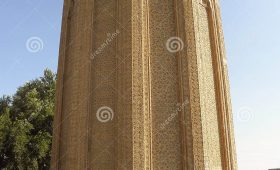Mount Nimba Strict Nature Reserve: A Unique Biodiversity Hotspot
Location and Geography
Mount Nimba Strict Nature Reserve is located at the intersection of Côte d’Ivoire, Guinea, and Liberia. This UNESCO World Heritage Site is renowned for its rich biodiversity and striking landscapes. Rising above the surrounding savannah, Mount Nimba’s slopes are covered with dense forests and grassy mountain pastures.
Unique Features
The reserve is home to an extraordinary variety of flora and fauna, including over 2,000 plant species. Notably, it hosts endemic species like the viviparous toad and chimpanzees known for using stones as tools. The peaks of Mount Nimba reach up to 1,752 meters, offering panoramic views and challenging hikes for outdoor enthusiasts.
Best Time to Visit
Plan your visit during the dry season, from November to March, when the weather is more predictable and trails are accessible. If you prefer lush landscapes and don’t mind occasional rain, the wet season from April to October offers a different, equally captivating experience.
Getting There
To reach Mount Nimba, fly into Félix-Houphouët-Boigny International Airport in Abidjan, Côte d’Ivoire. From there, you can take a domestic flight or hire a private car to the nearest town to the reserve. It’s essential to arrange for a local guide who knows the area well and can ensure your safety while exploring.
Local Transportation
Hiking is the primary mode of transportation within the reserve. Well-marked trails accommodate various fitness levels, allowing you to explore the diverse ecosystems at your own pace. Some areas are only accessible on foot or with a guide, who can provide valuable insights into the local flora and fauna.
Accommodation
While there are no accommodations within the reserve, nearby towns offer a range of hotels and guesthouses. These provide a comfortable base for your exploration of Mount Nimba, allowing you to rest after a day of adventure.
Summary of Facts
- Mount Nimba Strict Nature Reserve spans Côte d’Ivoire, Guinea, and Liberia.
- It is a UNESCO World Heritage Site known for its exceptional biodiversity.
- The reserve hosts over 2,000 plant species and diverse wildlife, including endemic species.
- The best time to visit is during the dry season (November to March).
- Access involves flying to Abidjan and arranging transport to the nearest town.
- Hiking is the main way to explore the reserve, with guides recommended for safety and insights.
- Accommodations are available in nearby towns.




